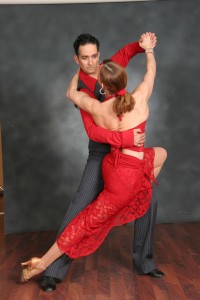 As we struggle to wrap minds and bodies around a new sequence, our wise dance teacher asserts that Argentine tango is not complicated, but complex. His words give me pause, and hope. Tango looks complicated, and takes years of practice to master. Yet, even the most dazzling choreography is essentially a pattern of basic steps.
As we struggle to wrap minds and bodies around a new sequence, our wise dance teacher asserts that Argentine tango is not complicated, but complex. His words give me pause, and hope. Tango looks complicated, and takes years of practice to master. Yet, even the most dazzling choreography is essentially a pattern of basic steps.
As a psychotherapist, this distinction seems quite relevant beyond the dance floor. Helping clients who are suffering to make sense out their lives can feel complicated, but perhaps the intricate dance of psychotherapy is, like tango, a layering of steps and patterns.
A few concepts that simplify therapeutic relationship for me are connection, presence, self-awareness, humility and perspective. When a dance goes well, the partners are in sync. They have a strong, tangible connection that transcends the alchemy of physical chemistry or attraction. Dancers communicate with each other, often nonverbally. Therapists deliberately cultivate and maintain empathetic attunement with our clients. Connection is the fulcrum for therapy. When Ego steps into the space between us, connection wavers. Miscommunications happen. Insecurity and perfectionism complicate relationships.
As dance partners need to be fully present to each other to coordinate their steps and negotiate the space of the dance floor, the therapeutic process flows when we manage to stay together in the moment with our clients. Mindful presence helps us to keep in step and rhythm, to focus on what is actually happening. Staying centered in any complex relationship takes self-awareness. Partner dancing is not about one controlling the lead or the other blindly following. They work together, each learning to maintain individual frame and axis of balance. Similarly, therapy evolves when both partners are able to keep their feet under them, therapist self-awareness nurturing client self-awareness.
To grow and learn is to be vulnerable. Good dancers expect to make mistakes, to fall in and out of sync and rhythm. As the saying goes, when you stumble, make it part of the dance. Err graciously. They improve over time at stepping back to figure out how a small step gone awry threw off the entire pattern. Similarly, therapy is rarely a linear process. One step forward, two steps back. Creating new patterns of being requires patience and practice. It takes humility to own our fears and foibles while gently calling our clients on theirs.
Keeping perspective is important. The essence of any dance is simply expressive movement to music. Good dancers attend to the technical details while keeping in mind the bigger picture they are co-creating. Whatever theoretical methodologies we subscribe to and creative counselling techniques we weave in to help our clients wade through the intricacies of human feeling, thought and circumstance, the essence of our work is the co-creation of meaningful, compassionate dialogue. Simply put, psychotherapy is a therapeutic conversation. Inherently complex, but not necessarily complicated.
*The views expressed by our authors are personal opinions and do not necessarily reflect the views of the CCPA